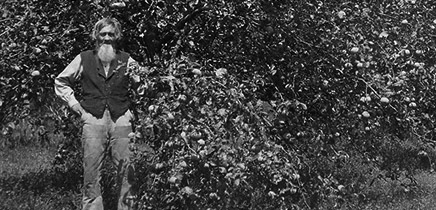Breweries played an important part in the history of Chaska. The city proved to be a prime example of small city brewing, thanks to four breweries that operated throughout the mid-1870s. Even by the 1900s, Chaska’s breweries continued to hold stories of significance in the history of Minnesota beer production.
Early Days and Success
The earliest known brewery to open in Chaska dates back to 1862. That year, on a bluff just west of the Pine Street/Highway 212 (then Yorkville Road) intersection, a brewery was built by Joseph Fritz and George Ulmer. Under modest production rates, the brewery produced approximately five to ten barrels of beer in the winter months and approximately fifty barrels in the summer. For brewing the beer, Ulmer would purchase barley from local farmers.
After operating the first brewery for only a short period of time, Joseph Fritz left to build Chaska’s second brewery in 1863. Where the second brewery was located is uncertain, but it became the leader of Chaska’s breweries by 1869, before burning down in 1875. In 1866, two more breweries were built in Chaska. Fritz was responsible for the construction of one of them, though little else is known about it. The other brewery was started by Henry Young and Charles May and was situated at the corner of Beech Street and Stoughton Avenue. This brewery came to be known as the Union Brewery, and had an annual production of 800 barrels by 1878. By this time, the Union Brewery was owned by Peter Iltis, a noted Chaska businessman. Iltis would periodically own the brewery from 1873 to 1885.
In 1875, the first Chaska brewery was acquired by Bernard Leivermann. Leivermann increased production in the brewery, with an annual production of nearly 900 barrels by 1878. In 1887, Leivermann added a bottling plant and started a delivery service for Chaska residents. In time, to compete with national breweries, Leivermann wrote a letter to the local newspaper. In his letter, he encouraged Chaska residents to “trade with him since his prices were lower and the profits stayed in the community.”
Prohibition and Decline
By the 1900s, America’s Prohibition movement crippled brewing efforts in Chaska. By this time, only two breweries remained in the city: Chaska Brewery and Union Brewery. In the early 1920s, the Prohibition effort caused the Chaska Brewery to forever close its doors. The building was razed and Highway 212 was expanded in its place. For the Union Brewery, soda pop production allowed the business to continue until after Prohibition ended.
The Union Brewery continued under the management of Fred Beyrer, whose father had purchased the brewery in 1906. It became known as the Beyrer Brewery, and sold kegs of beer from 1934 to 1955. The Beyrer Brewery was one of only twenty breweries to reopen in Minnesota after Prohibition, in contrast to the more than thirty (such as the Chaska Brewery) that were shut down for good. Another unique trait about the brewery was its determination to continue as a small community brewery until the mid-1950s, in the face of stiff competition from bigger breweries.
In 1989, the Beyrer Brewery, the last one in Chaska, was torn down. It wasn’t the only Minnesota brewery to meet such a fate. To this day, across America, only about two dozen breweries are now on the National Register of Historical Places. However, some artifacts from Chaska’s brewing history can still be found. In the 1970s, hundreds of kegs were sold from the Breyer Brewery at an auction. They can be found to this day in local houses and businesses.
“Suds Up: Breweries Gone by not Forgotten”. Chaska Herald, December 6, 2007, 1, 11.
“Eine geschechta doe brauerei (A story/account of breweries)”. Chaska Herald, April 14, 1994, 11.
Chaska A Minnesota River City, (Chaska, MN: city of Chaska, 1951)


